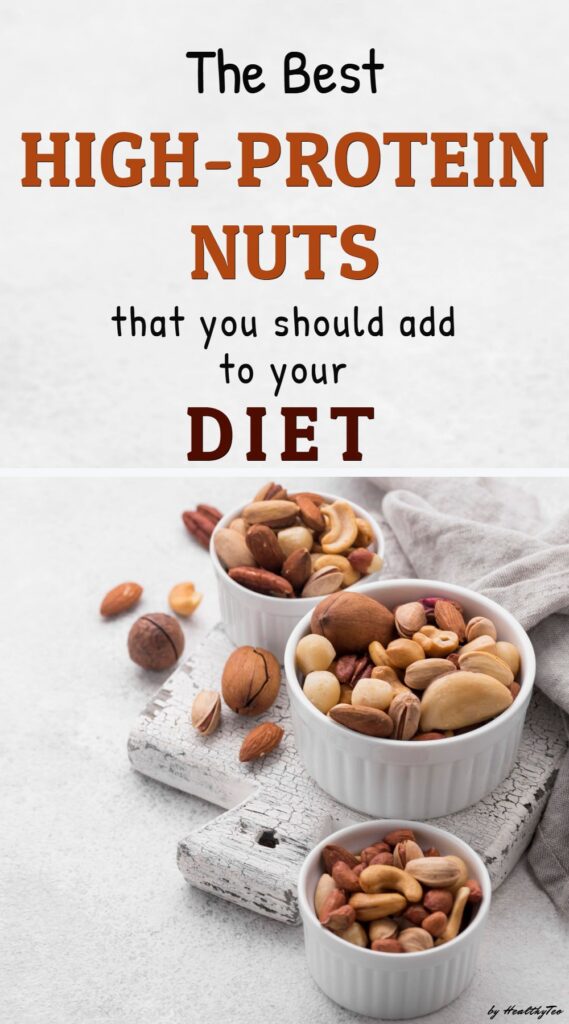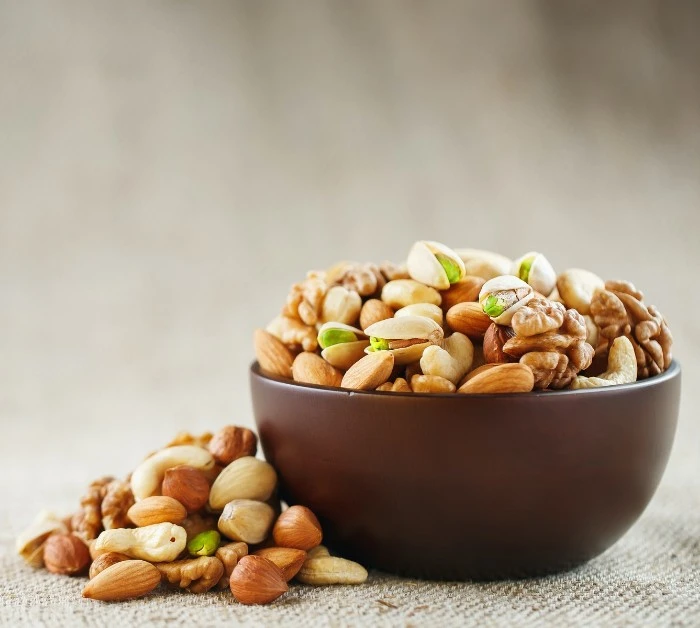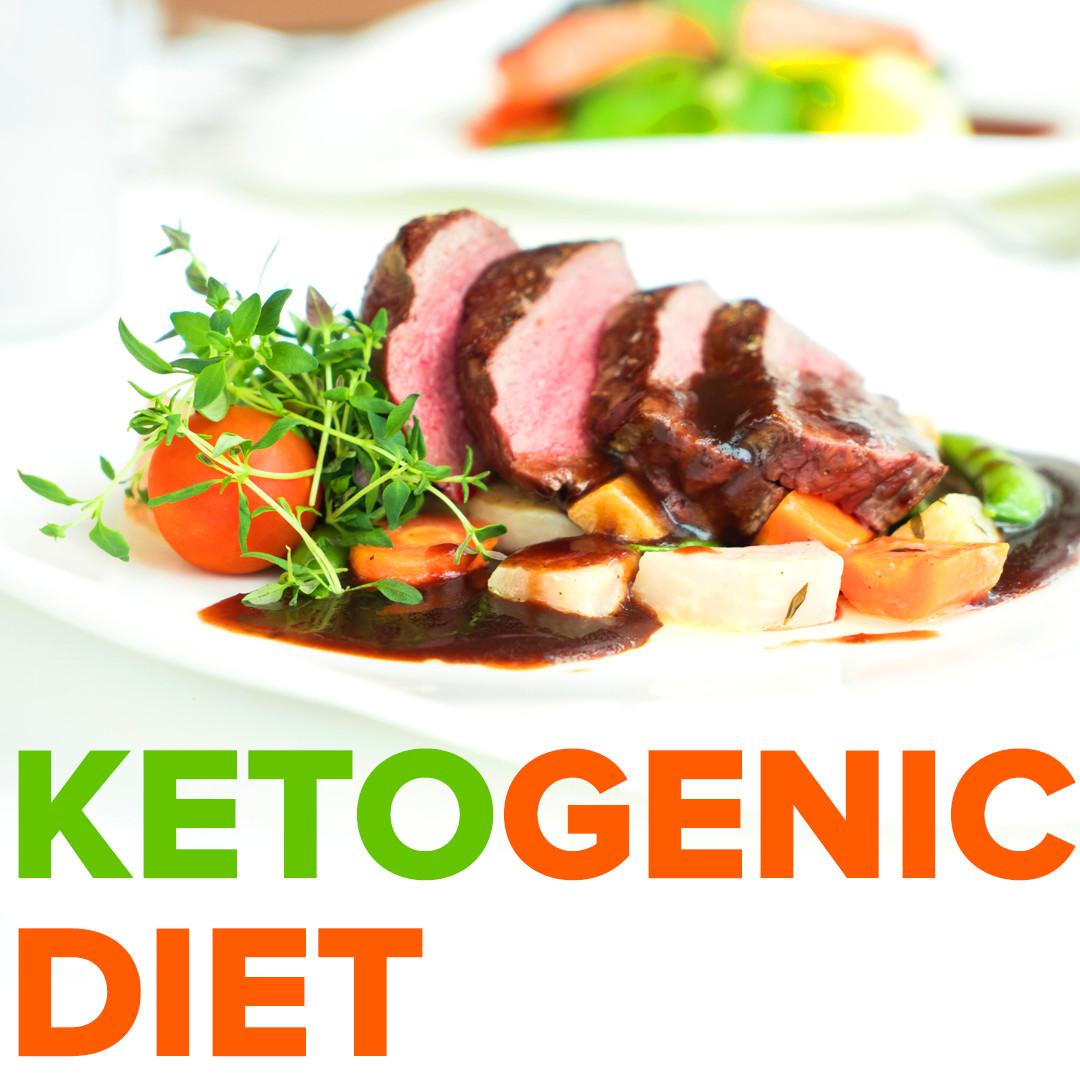Nuts are a good source of plant-based protein. While all nuts contain protein, some have a higher protein content than others. We’ve compiled a list of the highest protein nuts, ranking from lowest to highest in terms of protein content.
Before we get started on our list of the best high-protein nuts, let’s go over some basic information about nuts and their main characteristics!
This post may contain affiliate links, which means we may receive a small commission, at no cost to you, if you make a purchase through a link. For more information, please see our disclosure.
What are nuts?
Nuts are in fact fruits. They are dry, single-seeded fruits with high oil content. They are often surrounded by a leathery or solid outer covering. Botanically, nuts are a type of dry fruit with a single seed, a hard shell, and a protective husk.
The hard, inedible outer shell must usually be cracked open in order to release the kernel inside. Most nuts, fortunately, may be purchased shelled and ready to consume at the shop.
Note* – Though peanuts are technically legumes, like peas and beans, they are commonly referred to as nuts due to their comparable nutritional profile and properties.
Nuts are available in a wide range of shapes, sizes, and flavors. Different varieties have different nutrition, but all nuts provide plant-based proteins and health benefits. Nuts are naturally high in healthy fats while being low in saturated fats.
The best high protein nuts
Macadamia nuts
Protein: 2.24 grams per 1 oz (10-12 kernels) (28.35 grams)
Macadamia nuts are calorie-rich nuts that are high in healthy fats, vitamins, and minerals. They have moderate fiber content and are low in carbohydrates and sugar.
These nuts are versatile and simple to incorporate into a variety of diets. Raw macadamia nuts are the healthiest option in general. If you don’t have time to roast them yourself, dry-roasted versions are a suitable alternative; however, avoid oil-roasted varieties, which include additionally added fats.
Another way to enjoy macadamia nuts is in macadamia butter. It can be spread over bread, fruit slices, or mixed into oatmeal or yogurt just like peanut butter.
Pecans
Protein: 2.6 grams per 1 oz (19 halves) (28.35 grams) – source USDA
A handful of pecans about 19 halves is a decent source of fiber, thiamin, and zinc, as well as an outstanding source of copper and manganese. Each 1-ounce portion has 12 “grams” of healthy monounsaturated fat, with zero cholesterol or sodium.
Compared to other nuts pecans are among the lowest in carbs (4 grams) and highest in dietary fiber (3 grams) per serving.
Pecans are a delicious addition to both sweet and savory dishes. They can be used as a yogurt topping or to add crunch to trail mix, pancakes, or cereal.
Stuff dates with pecans and cream cheese for a tasty dessert or appetizer.
Pili nuts
Protein: 3 grams per 1 oz (28.35 grams)
Pili nuts, touted as the world’s highest fat nut (22 grams total fat per 1 ounce serving), is being promoted by ketogenic and paleo diet followers, as well as vegans looking for natural food sources high in fat and low in carbs.
The Philippines is home to the majority of large-scale pili nut cultivation. The nuts have a teardrop shape and are protected by a hard shell and an outer coating that adheres to the shell.
Pili nuts are one of the few plant sources that are a complete source of protein, supplying the body with all of the essential amino acids it requires through diet.
Because of their high-fat content, they have a rich buttery flavor and a texture that is ideal for using as a non-dairy alternative for nut “milk” and yogurt.
Pine nuts
Protein: 3.88 per 1 oz (167 kernels) (28.35 grams) – data for dried pine nuts
Pine nuts are the seeds found in certain types of pine cones. Because of the time and labor involved in its harvest, the small, sweet, teardrop-shaped nut commands a high price. It can take up to 25 years for pine trees to begin producing edible pine nuts, and even longer for production to reach its peak.
There are approximately 20 pine tree species that produce large enough seeds to harvest. Korean pine, pinyon pine, and stone pine are popular varieties in the United States.
Pine nuts are simple to eat. You can put them on salads, pasta dishes, incorporate them into grain dishes, and even top ice cream or yogurt with them. Pine nuts can be used to make pesto or blended into homemade hummus recipes.
Note* – Never eat pine nuts from pine trees unless you are certain that the species is safe to eat.
Learn more about pine nuts here!
Brazil nuts
Protein: 4 grams per 1 oz (6 kernels) (28.35 grams)
Brazil nuts are easy to identify in a bag of mixed nuts because they are usually the largest. These nuts are high in energy, high in nutrients, and one of the richest sources of selenium.
They have the highest selenium content of any nut, with an average of 96 mcg per nut, or 175% of the RDI. On average, most other nuts provide less than 1 mcg.
Consuming an excessive amount of Brazil nuts can result in selenium toxicity. Selenosis is a condition that can cause breathing problems, heart attacks, and kidney failure.
Important* – An ounce of Brazil nuts contains six to eight nuts, but you shouldn’t eat more than one to three Brazil nuts per day.
Hazelnuts
Protein: 4.25 grams per 1 oz (28.35 grams) – dry roasted, without salt added
The filbert, or hazelnut, is mostly grown in Turkey, Spain, Italy, and the United States.
Hazelnuts have a somewhat sweet, buttery, and toasted flavor, making them a very tasty protein source. These nuts are high in nutrients such as vitamins, minerals, antioxidants, and healthy fats.
The majority of the antioxidants are located in the nut’s skin. As a result, it is preferable to consume entire, unroasted kernels with the skin rather than peeled, roasted, or unroasted kernels.
You can prepare your own “Nutella” spread for a high-protein snack. It’s so super easy to make and delicious. Here’s the recipe from Foodie Fiasco – healthy homemade Nutella!
Walnuts
Protein: 4.31 grams per 1 oz (14 halves) (28.35 grams)
Walnuts are made up of 65% fat and about 15% of protein. They have a comparatively high concentration of omega-3 fat, which has been linked to a variety of health benefits.
Furthermore, walnuts are unusually high in antioxidants, which are concentrated in their brown skin. In fact, walnuts came in second place in a study that looked at the antioxidant content of 1,113 regularly consumed foods in the United States.
Walnuts, with their fatty texture and mouthfeel, are a nice addition to ground meats and can help to improve the protein level of meat-based recipes.
Pistachios
Protein: 5.73 grams per 1 oz (49 kernels) (28.35 grams)
With protein comprising 20% of their weight, pistachios have a higher ratio of essential amino acids relative to their protein content.
A serving of pistachios contains the same amount of protein as one egg.
These tasty nuts are also higher in antioxidants than other nuts and seeds. Only walnuts and pecans have a higher concentration. Pistachios contain the highest lutein and zeaxanthin concentration of any nut, both of which are crucial antioxidants for eye health.
Pistachios, in addition to being a delicious snack, can be used in baking and cooking to provide a green or purple color to a variety of recipes. Here are some ideas for making greater use of pistachios.
Cashews
Protein: 5.16 grams per 1 oz (28.35 grams)
Cashews are rich in protein, but they also provide a variety of vitamins and minerals.
A quarter cup of cashews contains approximately 80% of the Daily Value for copper. Copper is a mineral that aids in the formation of red blood cells and connective tissue.
Cashews, whole or ground, can be used in a variety of meals, including scrambled tofu and stir-fries, as well as soups, stews, and salads.
Remember that certain roasted and salted cashews may contain considerable levels of added oils and salt. When possible, use dry roasted or unsalted cashew varieties.
Almonds
Protein: 6 grams per 1 oz (23 whole kernels) (28.35 grams)
Almonds are commonly referred to as nuts, but they are actually seeds rather than true nuts.
A handful of almonds (about 1 ounce) contains one-eighth of a person’s daily protein requirements.
They are also high in vitamins, minerals, fat, and fiber. A plant-based diet may be deficient in B vitamins, choline, and protein. Vegans can complement their nutritional needs by consuming almonds.
Almonds are also a great source of antioxidants. They are mostly concentrated in the skin’s brown layer. As a result, blanched almonds (those that have had their peel removed) are not the healthiest option.
Crunchy, creamy, and pleasant when salted, almonds are one of the few safe food options available at airports and an easy way to add an excellent source of protein.
Pair almonds with a piece of fruit to make a balanced snack.
Peanuts
Protein: 7.31 grams per 1 oz (28.35 grams)
Peanuts, despite their name, are not related to tree nuts. They are related to beans, lentils, and soy as legumes. From a nutritional and culinary aspect, they are classified as a nut.
Peanuts contain the most protein of any frequently consumed nut. They are high in fat, vitamins, and minerals, in addition to protein. They are one of the richest sources of biotin, a vitamin that aids in the use of enzymes and the transport of nutrients throughout the body.
Note* – Peanuts are one of the most common food allergens. Peanut allergies can be fatal, and peanuts are sometimes regarded as the most severe allergen.
All peanuts and peanut products should be avoided by anyone who has this allergy.
How much protein do you need?
Protein’s Recommended Dietary Allowance (RDA) is a modest 0.8 grams per kilogram of body weight or 0.36 grams per pound. The RDA is the very minimum you need to avoid becoming ill, not the quantity you should eat on a daily basis.
You may calculate your daily protein intake by multiplying your weight in pounds by 0.36.
The average sedentary man should consume approximately 56 grams of protein per day, whereas the average woman should consume approximately 46 grams.
How much protein do nuts provide?
Depending on the variety of nuts, you’ll get 2 to 7 grams of protein per ounce (28 grams) – around one small handful.
Avoid eating too many nuts
Nuts are extremely energy-dense ( calories per gram) compared to other protein-rich foods, so they should be consumed in moderation.
By eating a lot of nuts and other foods high in fat and low in protein, you’re likely to consume more calories than you need to lose or maintain your weight.
The American Heart Association suggests four 1.5-ounce (approximately a handful) servings of unsalted, unoiled nuts per week.
Another reason to be cautious with nuts is that they are extremely easy to overeat, especially when eaten directly from a container or bag.
How to avoid overeating nuts? – Portion about an ounce (30 grams) approximately a handful of nuts or one to two tablespoons of peanut butter from the container or jar and set it aside.

Disclaimer: The information on this website is for general informational purposes only and is not intended to be medical advice, medical diagnosis, or medical treatment. Before making any dietary changes, you should contact your doctor or another health care expert.




